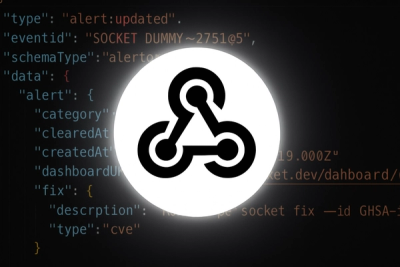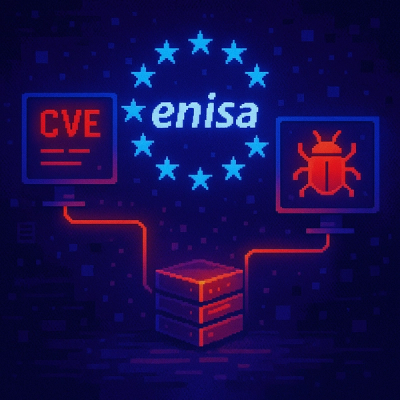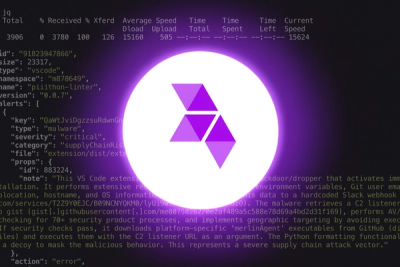
Product
Introducing Webhook Events for Alert Changes
Add real-time Socket webhook events to your workflows to automatically receive software supply chain alert changes in real time.
@actions/artifact
Advanced tools
@actions/artifactInteract programmatically with Actions Artifacts.
This is the core library that powers the @actions/upload-artifact and @actions/download-artifact actions.
[!IMPORTANT] @actions/artifact v2+, upload-artifact@v4+, and download-artifact@v4+ are not currently supported on GHES yet. The previous version of this package can be found at this tag and on npm.
The release of @actions/artifact@v2 (including upload-artifact@v4 and download-artifact@v4) are major changes to the backend architecture of Artifacts. They have numerous performance and behavioral improvements.
actions/download-artifact) now support downloading Artifacts from other repositories and runs if a GITHUB_TOKEN with sufficient actions:read permissions are provided.Firewall rules required for self-hosted runners.
If you are using self-hosted runners behind a firewall, you must have flows open to Actions endpoints. If you cannot use wildcard rules for your firewall, see the GitHub meta endpoint for specific endpoints.
e.g.
curl https://api.github.com/meta | jq .domains.actions
Uploading to the same named Artifact multiple times.
Due to how Artifacts are created in this new version, it is no longer possible to upload to the same named Artifact multiple times. You must either split the uploads into multiple Artifacts with different names, or only upload once.
Limit of Artifacts for an individual job.
Each job in a workflow run now has a limit of 10 artifacts.
Install the package:
npm i @actions/artifact
Import the module:
// ES6 module
import {DefaultArtifactClient} from '@actions/artifact'
// CommonJS
const {DefaultArtifactClient} = require('@actions/artifact')
Then instantiate:
const artifact = new DefaultArtifactClient()
ℹ️ For a comprehensive list of classes, interfaces, functions and more, see the generated documentation.
The most basic scenario is uploading one or more files to an Artifact, then downloading that Artifact. Downloads are based on the Artifact ID, which can be obtained in the response of uploadArtifact, getArtifact, listArtifacts or via the REST API.
const {id, size} = await artifact.uploadArtifact(
// name of the artifact
'my-artifact',
// files to include (supports absolute and relative paths)
['/absolute/path/file1.txt', './relative/file2.txt'],
{
// optional: how long to retain the artifact
// if unspecified, defaults to repository/org retention settings (the limit of this value)
retentionDays: 10
}
)
console.log(`Created artifact with id: ${id} (bytes: ${size}`)
const {downloadPath} = await artifact.downloadArtifact(id, {
// optional: download destination path. otherwise defaults to $GITHUB_WORKSPACE
path: '/tmp/dst/path',
})
console.log(`Downloaded artifact ${id} to: ${downloadPath}`)
To delete an artifact, all you need is the name.
const {id} = await artifact.deleteArtifact(
// name of the artifact
'my-artifact'
)
console.log(`Deleted Artifact ID '${id}'`)
It also supports options to delete from other repos/runs given a github token with actions:write permissions on the target repository is supplied.
const findBy = {
// must have actions:write permission on target repository
token: process.env['GITHUB_TOKEN'],
workflowRunId: 123,
repositoryOwner: 'actions',
repositoryName: 'toolkit'
}
const {id} = await artifact.deleteArtifact(
// name of the artifact
'my-artifact',
// options to find by other repo/owner
{ findBy }
)
console.log(`Deleted Artifact ID '${id}' from ${findBy.repositoryOwner}/ ${findBy.repositoryName}`)
It may be useful to download Artifacts from other workflow runs, or even other repositories. By default, the permissions are scoped so they can only download Artifacts within the current workflow run. To elevate permissions for this scenario, you must specify options.findBy to downloadArtifact.
const findBy = {
// must have actions:read permission on target repository
token: process.env['GITHUB_TOKEN'],
workflowRunId: 123,
repositoryOwner: 'actions',
repositoryName: 'toolkit'
}
await artifact.downloadArtifact(1337, {
findBy
})
// can also be used in other methods
await artifact.getArtifact('my-artifact', {
findBy
})
await artifact.listArtifacts({
findBy
})
If you have large files that need to be uploaded (or file types that don't compress well), you may benefit from changing the compression level of the Artifact archive. NOTE: This is a tradeoff between artifact upload time and stored data size.
await artifact.uploadArtifact('my-massive-artifact', ['big_file.bin'], {
// The level of compression for Zlib to be applied to the artifact archive.
// - 0: No compression
// - 1: Best speed
// - 6: Default compression (same as GNU Gzip)
// - 9: Best compression
compressionLevel: 0
})
The azure-storage package provides similar functionality for uploading and downloading files, but it is designed for use with Azure Blob Storage. Unlike @actions/artifact, which is specifically tailored for GitHub Actions, azure-storage is more general-purpose and can be used in a variety of contexts.
The aws-sdk package offers comprehensive functionality for interacting with AWS services, including S3 for file storage. It provides similar capabilities for uploading and downloading files, but it is more complex and versatile, supporting a wide range of AWS services beyond just artifact management.
FAQs
Actions artifact lib
We found that @actions/artifact demonstrated a healthy version release cadence and project activity because the last version was released less than a year ago. It has 6 open source maintainers collaborating on the project.
Did you know?

Socket for GitHub automatically highlights issues in each pull request and monitors the health of all your open source dependencies. Discover the contents of your packages and block harmful activity before you install or update your dependencies.

Product
Add real-time Socket webhook events to your workflows to automatically receive software supply chain alert changes in real time.

Security News
ENISA has become a CVE Program Root, giving the EU a central authority for coordinating vulnerability reporting, disclosure, and cross-border response.

Product
Socket now scans OpenVSX extensions, giving teams early detection of risky behaviors, hidden capabilities, and supply chain threats in developer tools.